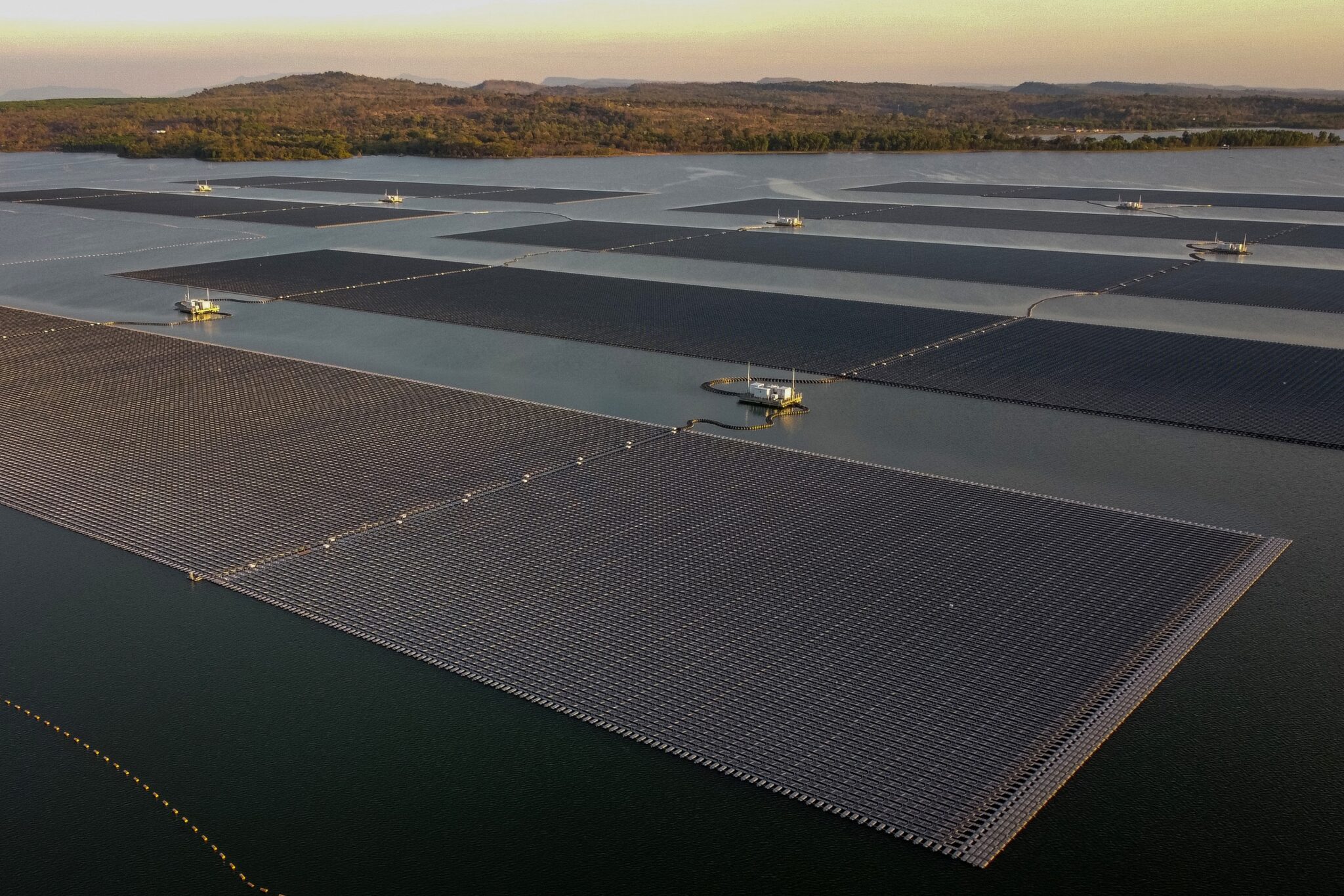
As far as the eye can see, rows of solar panels float on the shimmering waters of a Thai lake, a symbol of the Southeast Asian country’s stated goal to achieve carbon neutrality by 2050.
Installed in the northeast of the kingdom, the project is presented as the largest of its kind in the world: 720,000 square meters, the equivalent of 70 football fields.
Combined with the Sirindhorn Dam in the northeastern province of Ubon Ratchathani, the system can operate 24 hours a day and is the first of 15 such projects Thailand plans to build by 2037.
“Thanks to the 45 megawatts combined with hydropower and the energy management system for solar and hydropower, we can say that this is the first and largest project in the world”Deputy Governor of the Public Electricity Authority (EGAT), Prasertsak Cherngchawano, told AFP.
seventy football fields
At COP26, the kingdom pledged to achieve carbon neutrality by 2050, followed by net zero greenhouse gas emissions by 2065.
But to achieve these goals, the country must radically reorganize its electricity production, which still comes from natural gas at 55%, according to the Ministry of Energy, compared to only 11% from clean energy.
Construction of the $30 million Sirindhorn project took nearly two years to complete – including Covid-19-related delays caused by delays in solar panel deliveries and technicians’ illness.
Most of the electricity produced by the floating hydro-solar farm is destined for the Provincial Electricity Authority, which distributes power to homes and businesses in the provinces of Thailand’s lower northeastern region.
In addition to power generation, officials hope the giant solar farm will also attract tourists.
A 415-meter-long “nature promenade” in the shape of a sunbeam was installed to provide a panoramic view of the reservoir and floating solar panels.
“When I heard that this dam had the largest hydro-solar farm in the world, I knew it was worth seeing with my own eyes”Duangrat Meesit, a 46-year-old tourist, told AFP.
A tourist attraction
Some locals have reservations about the floating hydro-solar farm, with fishermen in particular complaining that they have been chased away from the best place to cast their nets.
“We catch much less fish than before and as a result our income has fallen sharply”told AFP Thongphon Mobmai, the head of a nearby village. “But the locals also have to accept the state’s desire to develop the region.”
For the power generation authority, the project will not affect agriculture, fisheries or other local activities.
“We only used 0.2 to 0.3% of the surface of the dam. People can use the land for agriculture, for housing or for other purposes.”said Mr Prasertsak of EGAT.
AFP